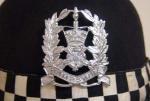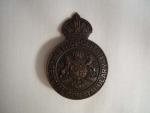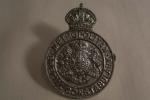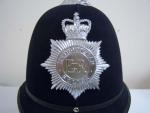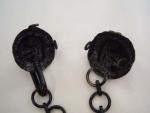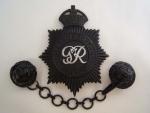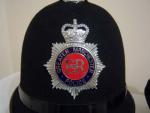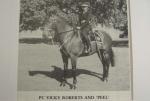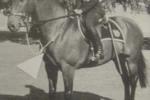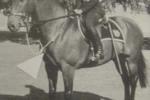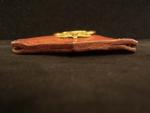-
Posts
6,486 -
Joined
-
Last visited
-
Days Won
10
Content Type
Profiles
Forums
Blogs
Gallery
Events
Store
Everything posted by Brian Wolfe
-
Thanks once again Nick for adding useful information. It sounds like it is all quite confusing. At least in my part of Ontario the amagamation of poiice services pretty well took place at one time and has remained in place since. The Provincial Police took over many smaller municipalities and Regional Police Services took over many others. However this is not the post to discuss that in any depth. Regards Brian
-

shot in the POW camp
Brian Wolfe replied to Noor's topic in Great Britain: Orders, Gallantry, Campaign Medals
Great post Timo. Well researched and a smashing presentation. Well done. Regards Brian -
Hampshire Constabulary The Hampshire Constabulary is situated in Southern England and serves Hampshire, the Isle of Wight and the cities of Portsmouth, Southampton and Winchester. Today's Hampshire Constabulary was formed in 1967 but its roots go back to 1832. Due to the Defence Regulations of 1943 the, then, Hampshire County Constabulary absorbed the Isle of Wight and Winchester to form the Hampshire Joint Police Force, in 1948 the name was changed to Hampshire Constabulary. Another name change occurred in 1952 and the Force became the Hampshire and Isle of Wight Constabulary. With the addition of Southampton and Portsmouth under the Police Act of 1964 the Force became the current Hampshire Constabulary in 1967. This has remianed the same until present time, with the exception of Christchurch which became the policing responsibility of Dorset. As may be seen in the photos below the custodian helmet plate differs greatly from the usual Brunswick Star used by many British police forces on their helmets. Research material for this write up came from "Hampshire Constabulary, Wikipedia". Regards Brian
-
This is what makes the GMIC invaluable to collectors. I was not aware that the studs were darkened on the Metropolitan Police helmets. I just ran downstairs (in a panic) to check this out and I think I am alright with this helmet being genuine. When I looked at the helmet I noticed right off that the rear stud was dark yet the side and front studs were shinny. A closer look revealed that, due to wear, the dark finish had been worn off. There are still very small traces of this finish on the three studs. This helmet came from a seller in America and I've purchased from him before with confidence. However, there seems to be many sellers who are throwing any helmet and plate together with no regard as to whether they belong to each other or not. There is one dealer in the UK, who I will not identify here to protect the GMIC from legal action, who is notorious for this. If any members are interested in this fellow's eBay name I will forward it to them but only through my email address. He mixes up the helmets and plates so often that I will not bid on anything he offers, no matter how genuine he may have made it look. I wonder what "Dorset" is like this time of the year? I will post the helmet in question in the British Headgear section with close up views for discussion later. Thanks for your observastion and additional information on the helmets of the Metropolitan Police. Regards Brian
-
To wrap up this session I have included two Special Constabulary hat badges. I think we should include the Special's hat badges here as they deserve to be included and it will help this section to become a more complete reference source for helment plates and cap badges as time passes. Regards Brian
-
Hello Everyone, I do hope others will add to this post and build it into a great reference for collectors and researchers, so please feel free to add your helmet plates and cap badges to this new theme. It seems only fitting to kick this new theme off by starting with the first organized, modern, police force in the world, London's Metropolitan Police. Founded in 1829 the force, stationed at the now iconic Scotland Yard, was founded by Sir Robert Peel in 1829 following a Parliamentary Commission Recommendation for policing changes in the previous year. It is interesting that the nicknames, "Peelers" and Bobbies" (named after the founder Sir Robert Peel) given to the new police force by a less than receptive public of the day has remained to the present time. Though the public's perceptions of the force and its officers has improved greatly in the eyes of the general public today [personal opinion]. My collection of British Police Helmet Plates and Cap Badges only goes back to King George VI, (I do hope others will help fill in the gaps), however, I have started this theme off with an example of a helmet plate from the King George VI era. I was lucky with the purchase of this specimen in picking up a period cape chain with brooches along with the plate. Mervyn Mitton, in his book, "The Policemen's Lot", pg. 115, has the following to say about the cape chain. "The older capes were usually fastened by two lions' heads with a chain passing between and attaching to a hook behind one head. These were usually well cast and although some were painted black they are attractive enough to collect." The Gentleman's Military Interest Club is quickly becoming a primary source of research and reference for the student and collector of British Police history and memorabilia. This is in no part possible without the continued participation of fellow members. Thank you to all who have contributed to the GMIC's British Police section and to those who will continue to help build what is becoming a world class forum. It is greatly appreciated. My continued thanks goes out to Mervyn who kindly allows me to pirate ideas, research material and quotes from his book, and forgives my trespass when I forget to ask permission first. Regards Brian
-
Well, it would seem the problem is in my writing. I meant that "horses" led the charge and not the Scots Greys. Sorry, one must be careful otherwise the message can become erroneous due to sentence structure. The painting, I believe, has to do with the Battle of Waterloo. Thanks for pointing that out. Regards Brian
-
Stuart, the horse is such a noble beast. Check out the paintiing by Lady Elizabeth Butler of the Scots Greys at the Battle of Waterloo. They also led the charge of the light Brigade at Balaclava, ill fated as it was, the list goes on. Better to have ones name associated with a majestic animal like a horse than a stubborn old mule (no inference intended). I just know I'll pay for that one. Regards Brian
-
...and mounted on a tank, just for good measure. Brian
-
No you were not seeing double, I accidently posted the image twice. Below is a larger photo of the two above, showing a member of the Mounted Branch during the final years before it was disbanded in 2000. Material for this post was taken from the Staffordshire Police 150th Anniversary Issue Magazine, several different internet sources (mostly to confirm the material I had was correct) and the submission from my friend and fellow GMIC member Stuart Bates. Many thanks Stuart. I hope you all enjoyed this piece and the latest addition to my STaffordshire collection. Regards Brian
-
The photo below shows the badge just behind the martingale knot. From this photo you can see that the term "martingale" badge is not very accurate as it is actually affixed to part of the harness. Stuart Bates has kindly offered the following description of this tack. "The badge would have been attached to the breastplate which is a "Y" shaped leather piece attaching to the girth and then either side of the saddle. Its purpose was to keep the saddle from slipping backwards as the crupper was to keep the saddle from slipping forward".
-
Shown below is a view of the top edge of the leather piece showing where it would have been attached to the harness. Also show is the custodian's helmet badge which would have been worn by the Mounted P.C.. As you can see they are exactly the same size, only the material used differs, with the horse badge in brass.



